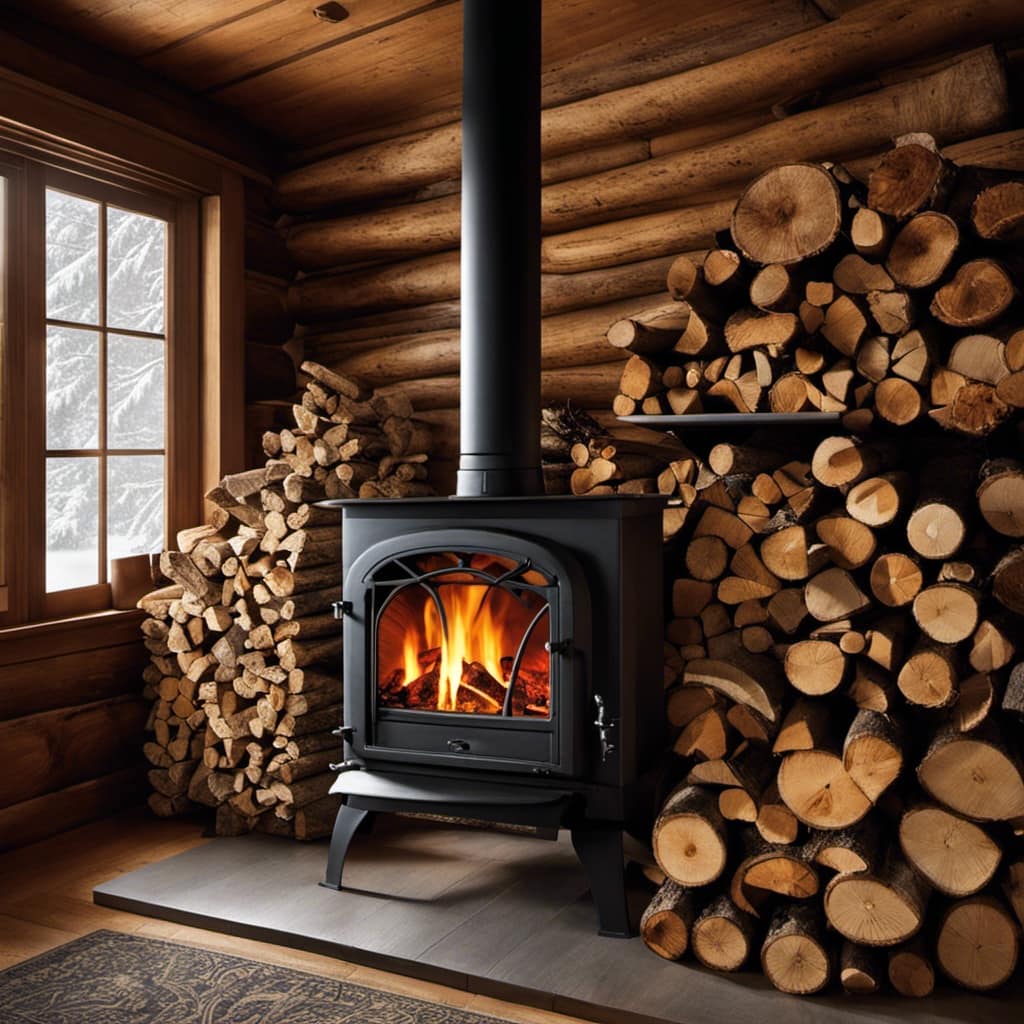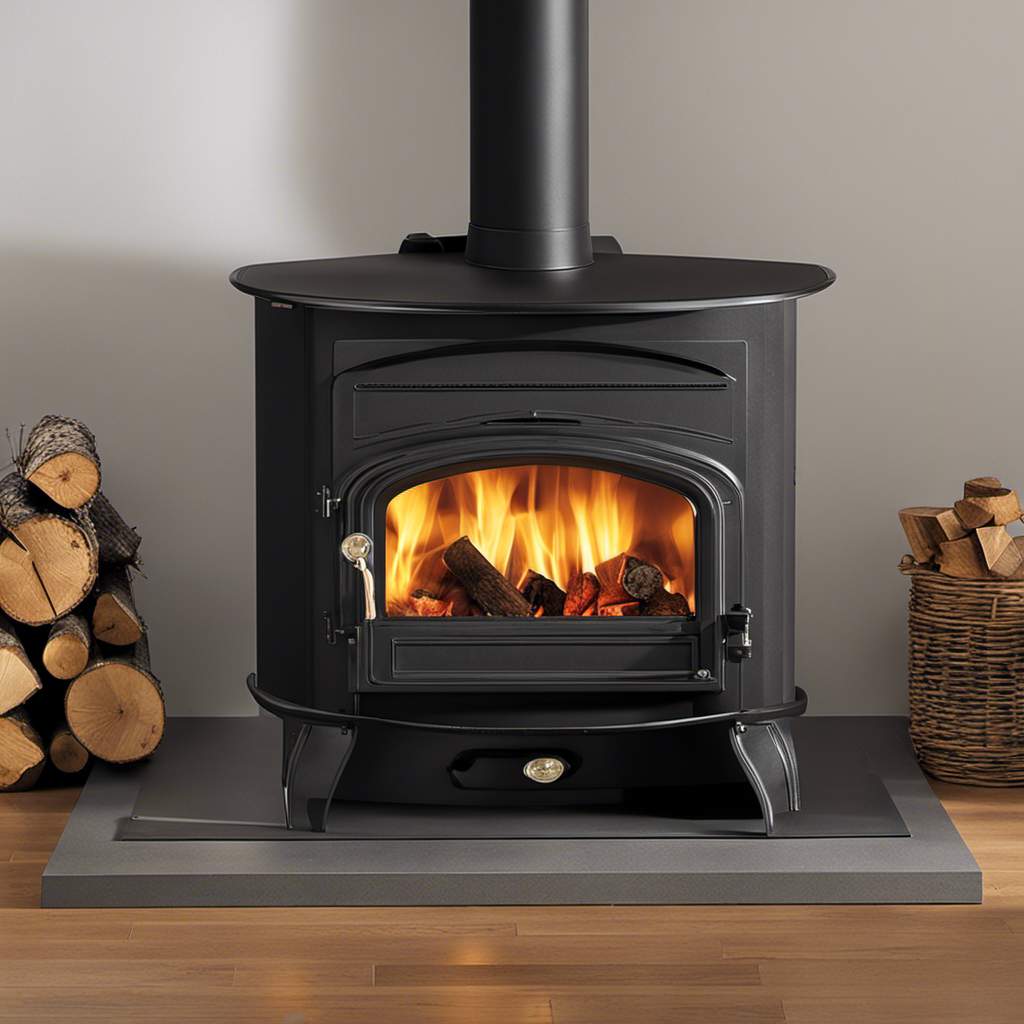I am completely captivated by the detailed mechanisms of my wood stove. Watching the flames dance and hearing the logs crackle, I am enthralled by the enchanting combustion process.
The air supply and draft control seamlessly regulate the perfect burn, while heat transfers and distributes throughout the room, warming every corner.
Maintaining and cleaning this marvel is essential for its efficiency, and of course, safety precautions are paramount.
Join me as I unravel the mysteries of how my wood stove works.
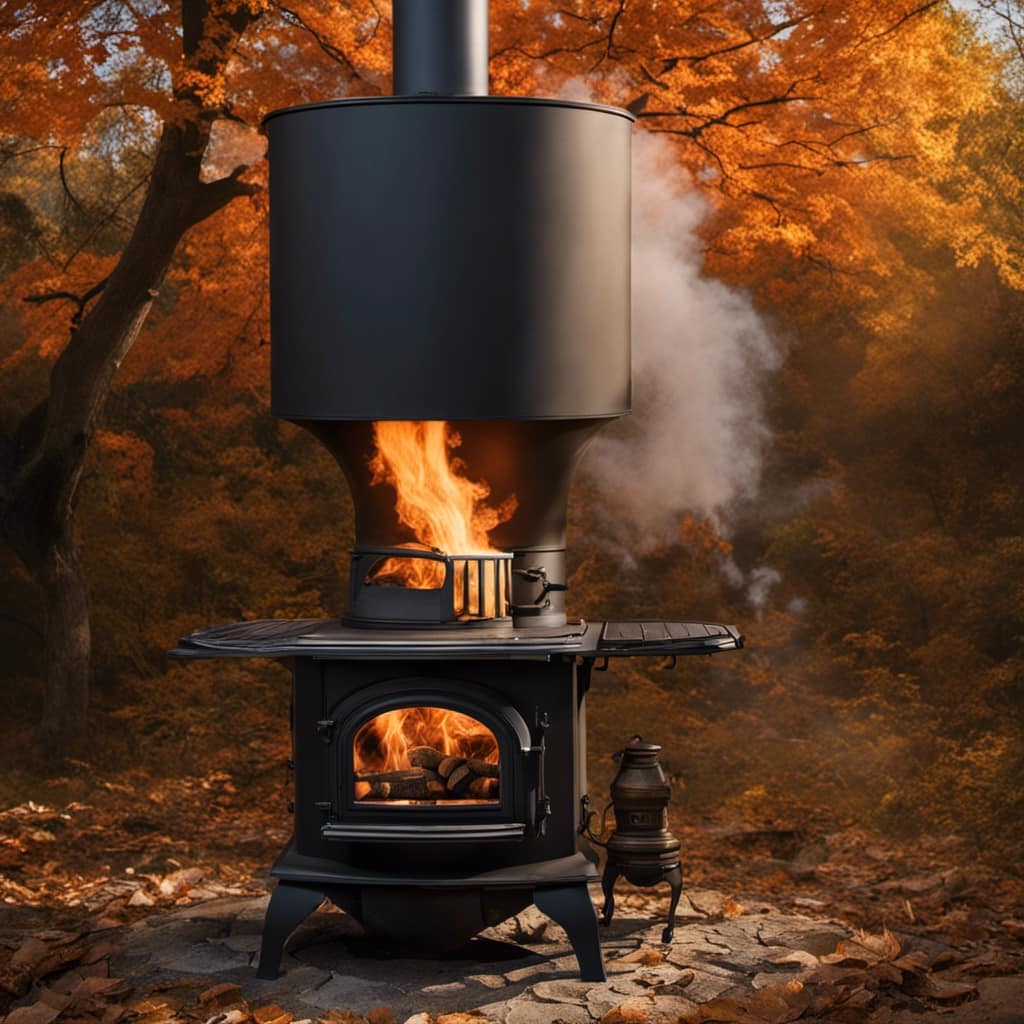
Key Takeaways
- Monitoring the combustion process ensures optimal heat production and fuel efficiency.
- Hardwoods like oak or maple burn longer and produce more heat compared to softwoods.
- Proper chimney draft and regular cleaning are essential for efficient operation and expelling smoke and gases.
- Blower fan and insulation materials improve heat distribution, prevent heat loss, and maximize heat transfer to the surrounding environment.
The Combustion Process
I frequently monitor the combustion process in my wood stove to ensure optimal heat production. Fuel efficiency optimization is crucial not only for cost savings but also for minimizing the environmental impact.
To achieve this, I carefully select the type and quality of wood I use as fuel. Hardwoods, such as oak or maple, burn longer and produce more heat compared to softwoods. Additionally, I make sure the wood is properly seasoned to reduce moisture content, as wet wood can decrease fuel efficiency and increase emissions.
To assess the environmental impact, I observe the color and texture of the smoke coming out of the stove’s chimney. Light gray or white smoke indicates clean and efficient combustion, while dark or black smoke suggests incomplete burning and the release of pollutants.
Transitioning into the next section, air supply and draft control play a crucial role in achieving optimal combustion.

Air Supply and Draft Control
While adjusting the air supply and draft control, I ensure that my wood stove is operating at its most efficient level. By carefully managing the air intake and chimney draft, I can maximize heat output and minimize smoke emissions.
Here are two key factors to consider:
Air Intake:
Properly adjusting the air intake allows for optimal combustion. Opening the air intake fully during the start-up phase ensures a quick and efficient ignition process.
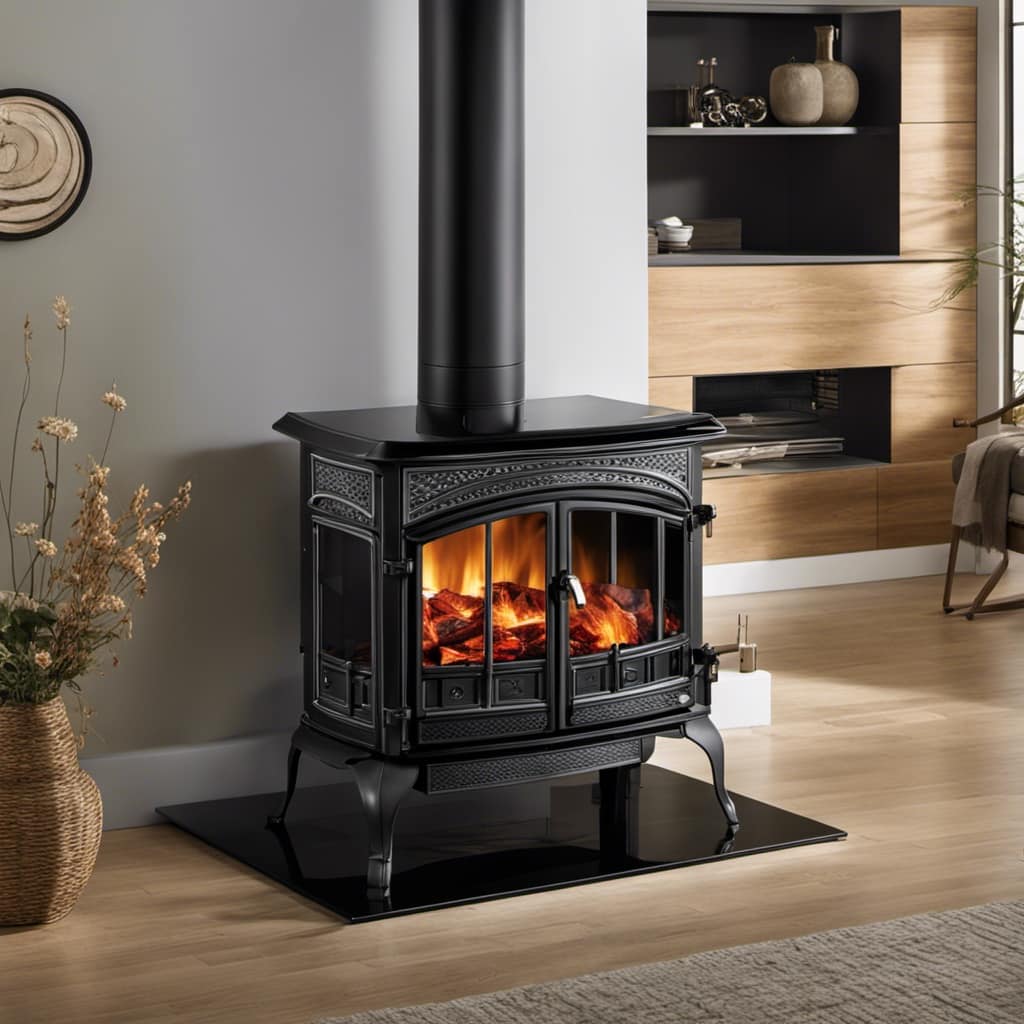
Once the fire is established, adjusting the air intake to a moderate setting helps maintain a steady burn while conserving wood and reducing heat loss.
Chimney Draft:
A strong chimney draft is essential for efficient operation. It helps draw in fresh air for combustion and expels smoke and gases.
Regularly cleaning the chimney and ensuring it’s clear of obstructions will help maintain a consistent draft, preventing backdrafts and improving overall stove performance.
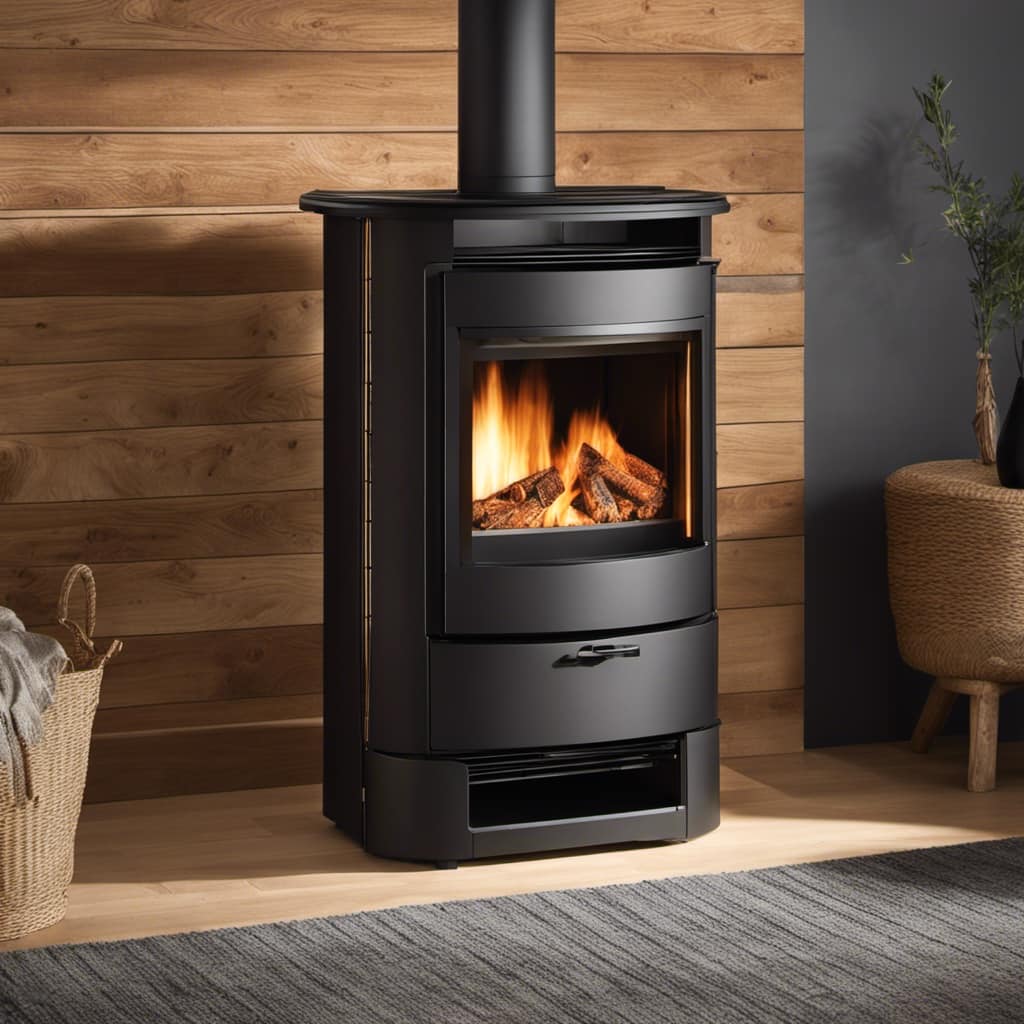
Heat Transfer and Distribution
To maximize heat transfer and distribution, I rely on a blower fan and ensure that warm air circulates evenly throughout the room. The blower fan is an essential component of my wood stove, as it helps to distribute the heat generated by the burning wood. By blowing the warm air into the room, it helps to evenly distribute the heat and prevent any cold spots.
In addition to the blower fan, the insulation materials used in the construction of the wood stove also play a crucial role in maximizing heat transfer and distribution. Insulation materials help to prevent heat loss and keep the warmth inside the stove, allowing for more efficient heat transfer to the surrounding environment.
Efficiency ratings are also an important consideration when it comes to heat transfer and distribution. A higher efficiency rating means that the wood stove is able to convert more of the heat energy generated by the burning wood into usable heat for the room. This not only maximizes heat transfer and distribution but also ensures that the wood is being used efficiently, reducing waste and improving overall performance.
Maintenance and Cleaning
Regularly inspecting and thoroughly cleaning my wood stove is essential to ensure optimal performance and prevent any potential fire hazards. A well-maintained wood stove not only provides efficient heating but also reduces the risk of chimney fires.
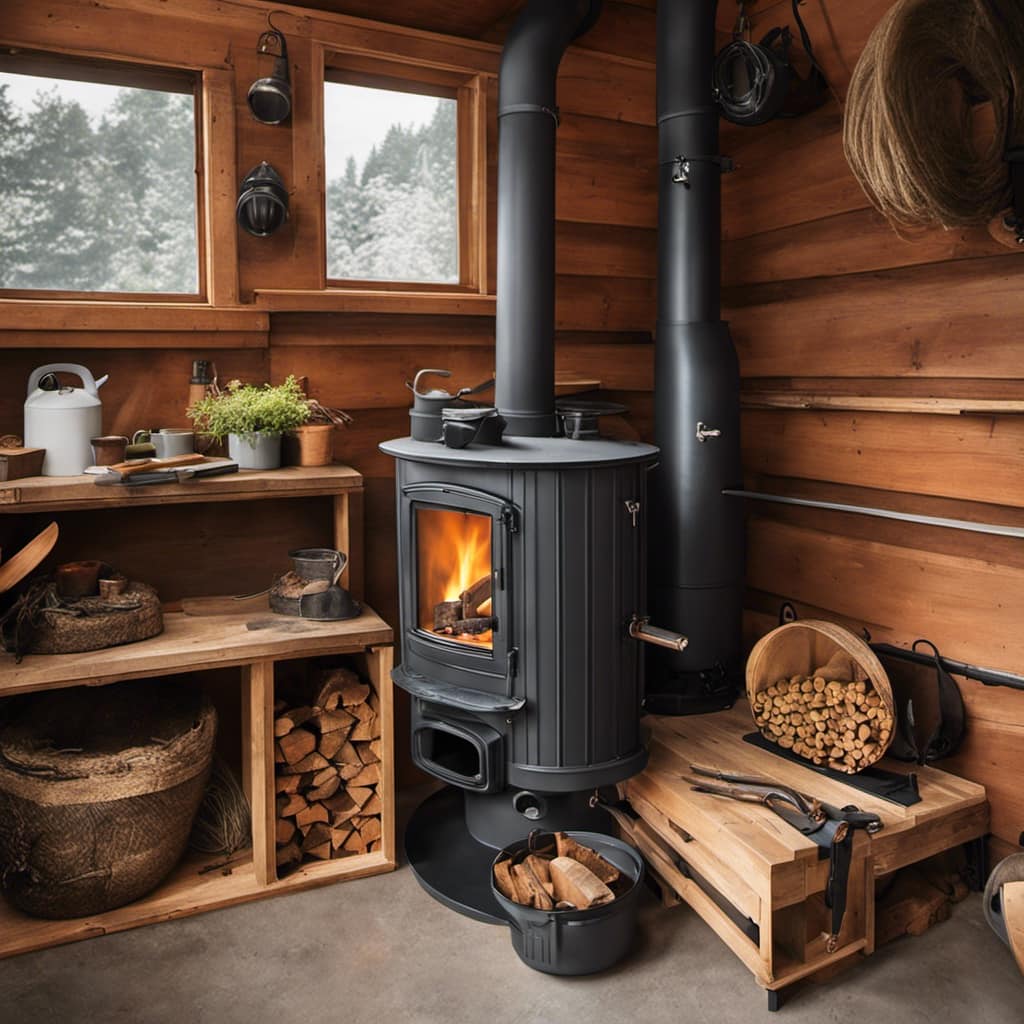
To keep my wood stove in top condition, I follow a strict maintenance routine that includes the following steps:
Cleaning:
Remove ashes and debris from the firebox regularly to prevent blockages and ensure proper ventilation.
Clean the stove’s exterior using a non-abrasive cleaner to maintain its appearance and prevent rust or corrosion.
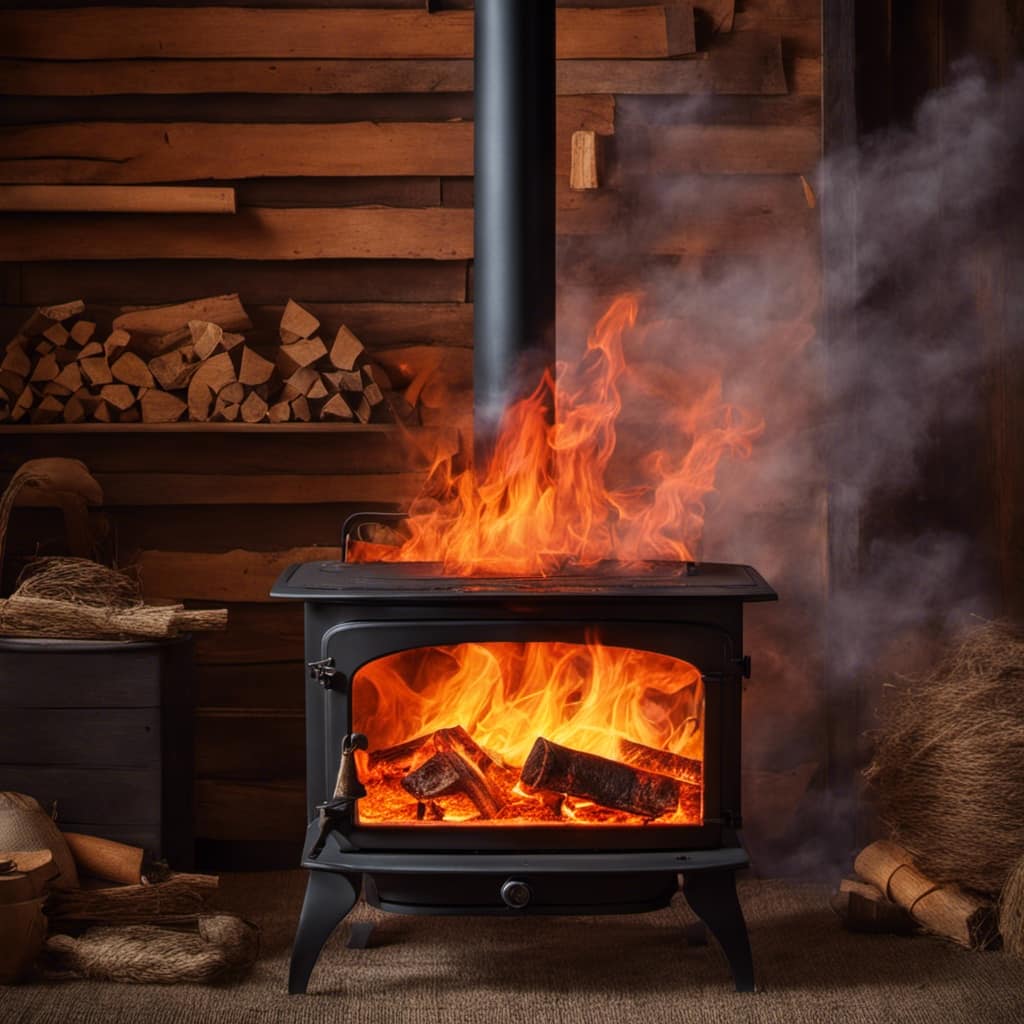
Chimney Inspection:
Schedule an annual chimney inspection to check for any buildup of creosote, a highly flammable substance.
Have a professional sweep the chimney to remove any creosote or debris and ensure proper ventilation.
Safety Precautions and Tips
I prioritize safety by implementing precautionary measures to safeguard against potential hazards when operating my wood stove. One of the most important safety considerations is ensuring proper ventilation requirements. It’s crucial to have adequate airflow in the room where the wood stove is installed. This can be achieved by opening a window or installing a vent to allow fresh air to circulate.
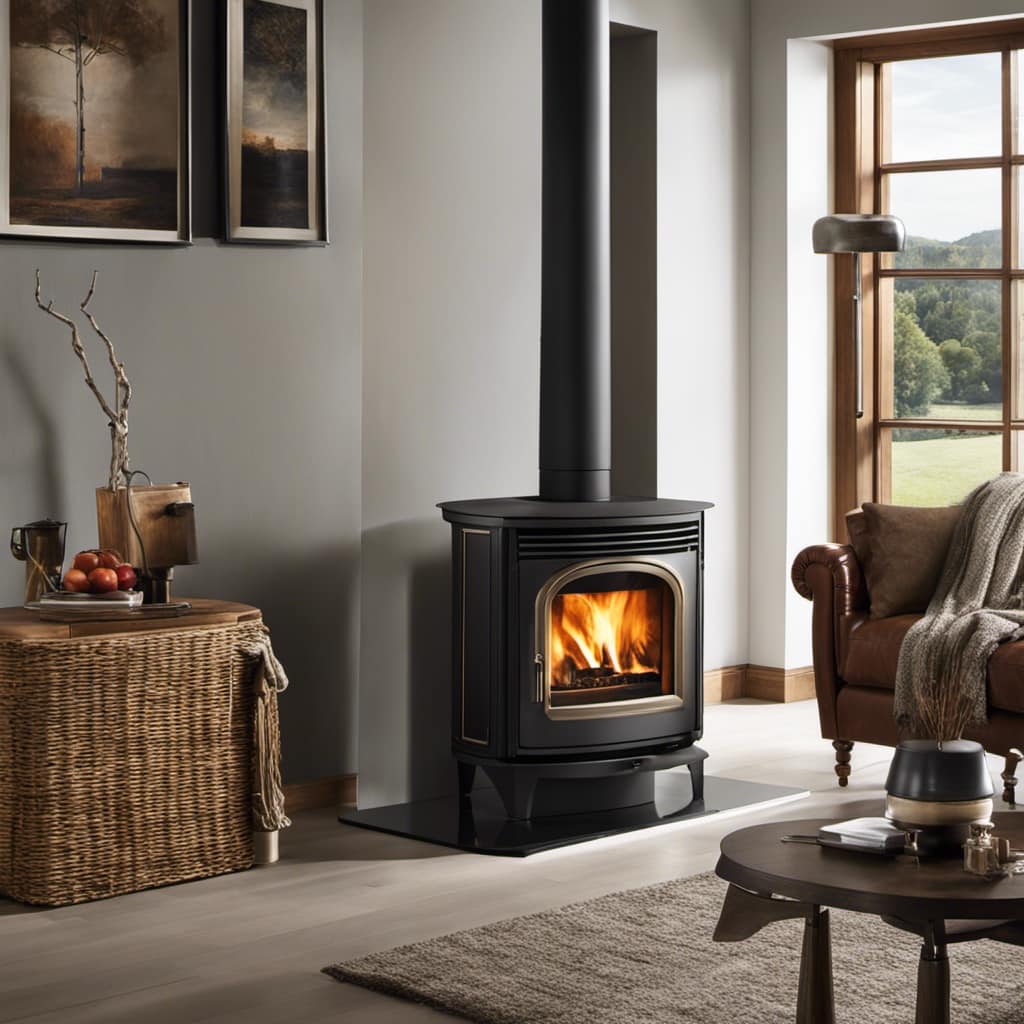
Additionally, proper wood selection is essential for safe operation. I always make sure to use seasoned hardwood, as it burns more efficiently and produces less smoke and creosote buildup. Softwoods, on the other hand, should be avoided due to their higher moisture content and increased risk of chimney fires.
Frequently Asked Questions
What Type of Wood Should I Use in My Wood Stove?
I use well-seasoned hardwood in my wood stove for optimal performance. It’s important to follow best practices for seasoning firewood to ensure efficient burning and reduce the environmental impact of using different types of wood.
How Can I Determine if My Wood Stove Is Working Efficiently?
To determine the efficiency of my wood stove, I can look for signs like excessive smoke, difficulty in starting or maintaining a fire, or a lack of heat output.
Are There Any Government Regulations or Certifications for Wood Stoves?
Oh, government regulations and certification requirements for wood stoves? They’re just a joy to navigate. So many rules to follow, so many hoops to jump through. Can’t wait to dive into the technicalities.
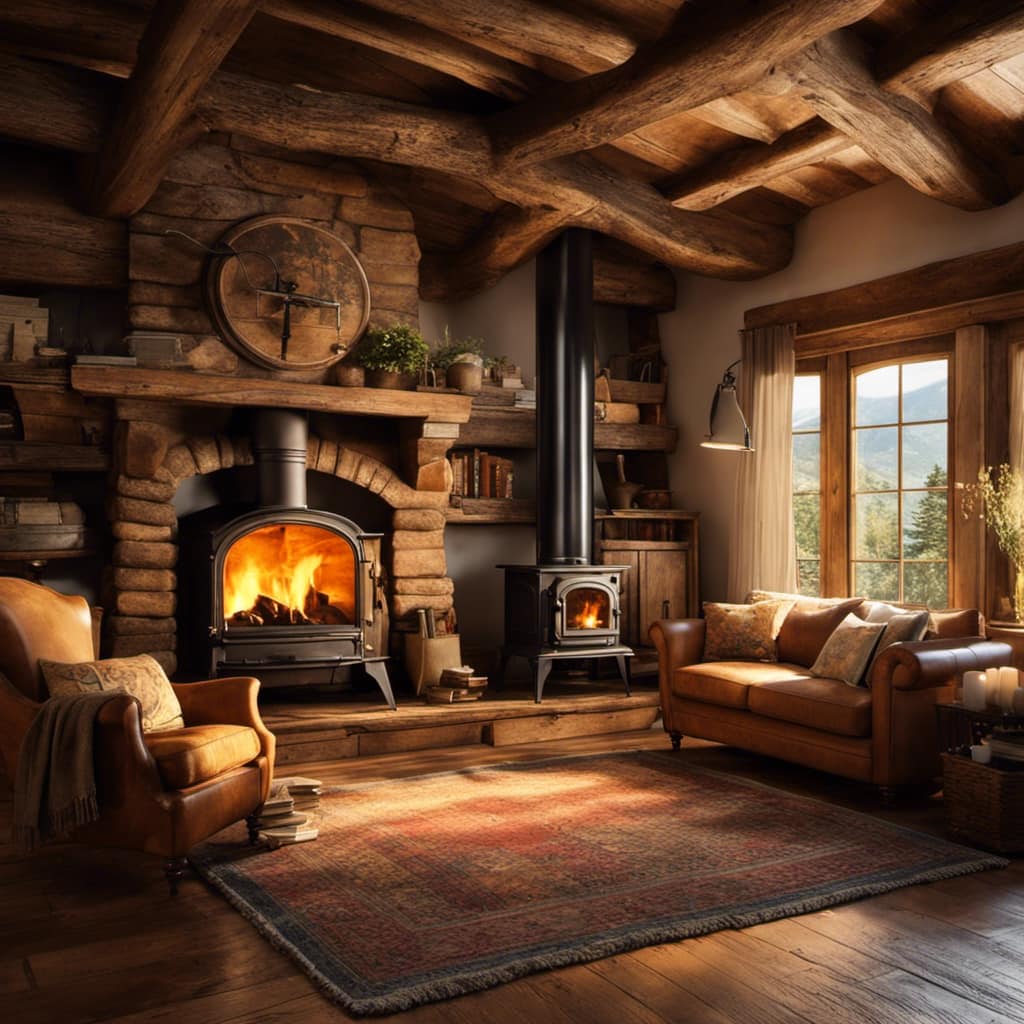
Can I Use My Wood Stove as the Primary Source of Heating for My Entire House?
Yes, you can use a wood stove as the primary source of heating for your entire house. It is an alternative heating option with pros and cons. It provides warmth and ambiance but requires regular maintenance and proper ventilation.
Are There Any Special Precautions I Should Take When Installing a Wood Stove in a Mobile Home?
When installing a wood stove in a mobile home, it is essential to take special precautions and safety measures. Proper insulation, clearances, and ventilation are necessary to prevent fire hazards and ensure the safety of the occupants.
Is It Safe to Move a Wood Stove?
Moving a wood stove requires caution and careful planning. It’s essential to ensure the stove is completely cool before attempting to move it. Make sure to enlist the help of others to avoid injury and carefully transport the stove to its new location to prevent damage or accidents.
Conclusion
In conclusion, my wood stove is a marvel of engineering, efficiently harnessing the power of fire to heat my home. Its combustion process, controlled air supply, and effective heat transfer make it a reliable source of warmth.
Of course, it also requires regular maintenance and cleaning to ensure optimal performance. So, while it may seem like a simple appliance, don’t be fooled. This humble wood stove holds the power to keep me cozy and comfortable, all with a touch of irony.
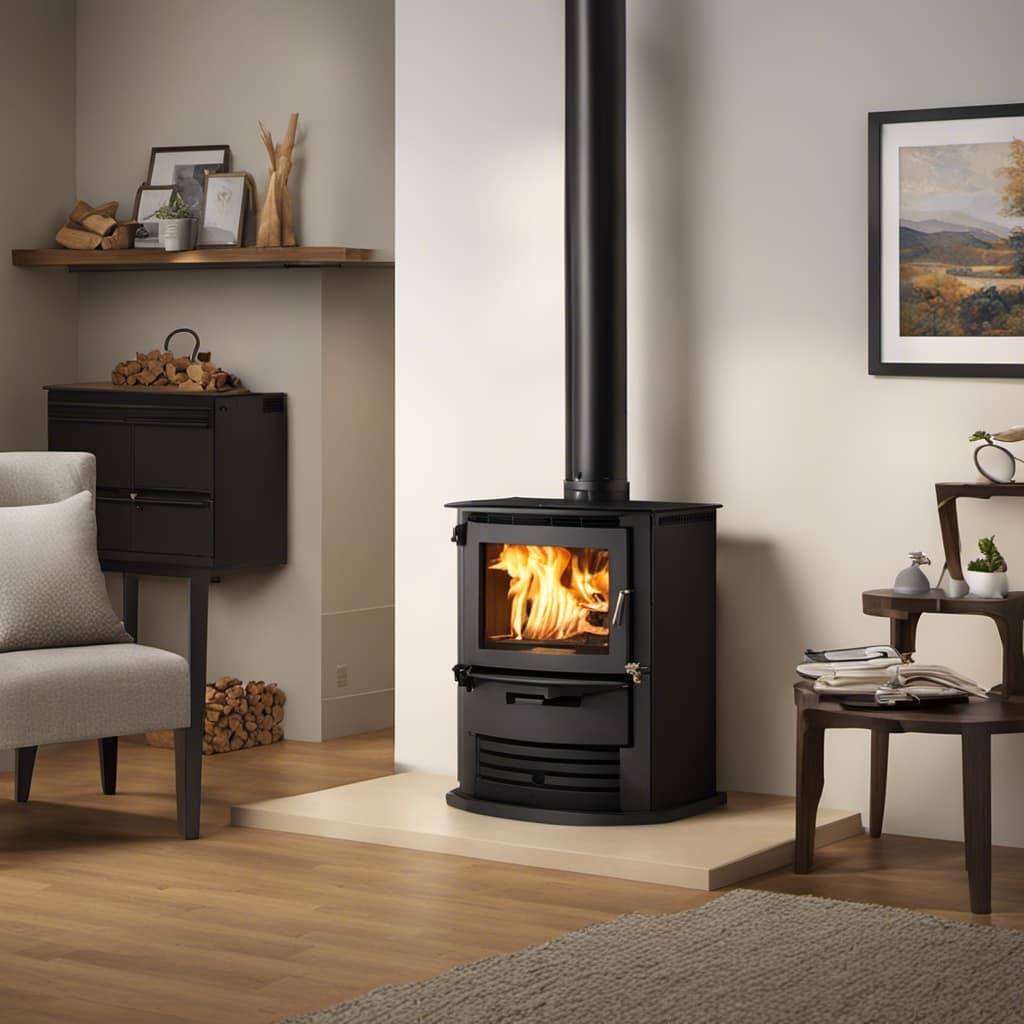
Growing up surrounded by the vast beauty of nature, Sierra was always drawn to the call of the wild. While others sought the comfort of the familiar, she ventured out, embracing the unpredictable and finding stories in the heartbeat of nature.
At the epicenter of every remarkable venture lies a dynamic team—a fusion of diverse talents, visions, and passions. The essence of Best Small Wood Stoves is crafted and refined by such a trio: Sierra, Logan, and Terra. Their collective expertise has transformed the platform into a leading authority on small wood stoves, radiating warmth and knowledge in equal measure.

